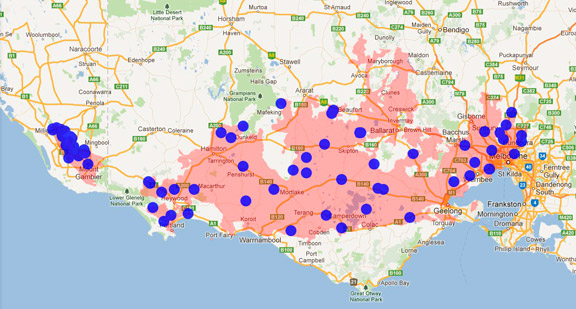A range of teacher professional learning programs will be developed to accompany the Biodiversity of the Western Volcanic Plains online outreach...




Common Eastern Froglet
Crinia signifera
Breeding season: throughout the year. Females lay 100-150 pigmented eggs usually found singly or in small groups often attached to submerged vegetation.
| Details | Description |
| Type | Amphibian |
| Group | Frog - Southern Frog |
| Former Scientific Name | Ranidella signifera |
| Other Common Names | Common Froglet |
| Identifying Characteristics | |
| Distinctive Markings | Adults are generally brown or grey with grey or black boomerang shaped ridges on the shoulders, interrupted by the forearm but then continuing to the groin. Pointed snout and indistinct tympanum. |
| Diet | Carnivore. Adults feed on invertebrates. |
| Habitat | Well vegetated edges of streams, temporary and permanent ponds, roadside drains and ditches, dams and swamps to seasonally flooded areas. |
| Native Status | Native to Australia |
| Sounds | The identifying call is a regular cricket-like chirping call "crick crick crick crick crick ...". |
| Taxonomy | |
| Phylum | Chordata |
| Class | Amphibia |
| Order | Anura |
| Family | Myobatrachidae |
| Genus | Crinia |
| Species | signifera |

Distribution maps indicate current and historic locations where species have been sighted.
Source: Atlas of Living Australia
| Conservation Status | |
| DEPI Advisory List | Not listed |
| FFG Act | Not listed |
| EPBC Act | Not listed |
The conservation status of species is listed within Victoria and Australia.
The Department of Environment and Primary Industry (DEPI) Advisory List consists of non-statutory advisory lists of rare or threatened flora and fauna within Victoria.
The Flora and Fauna Guarantee Act 1988 (FFG Act) lists threatened species in Victoria. Under the Act, an Action Statement is produced for each listed species.
The Environment Protection and Biodiversity Conservation Act 1999 (EPBC Act) is the Australian Government’s key piece of environmental legislation, listing nationally threatened native species and ecological communities.



